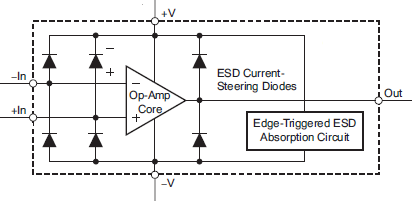Hi,
I have a transimpedance amplifier (TIA) operating at ±5V supply rail whose output feeds into a LMV7235 comparator. An issue arises when the output of the TIA undershoots momentarily to the negative rail which violates the input common mode voltage range of the LMV7235 comparator. The comparator responds by pulling this node down to about -1V for 14ms. I'm okay with this behavior since the TIA is only being used to modulate the comparator ON or OFF but the datasheet for this comparator states that this will result in an increase of input bias current.
My question is how much will the input bias current increase by and if there are any reliability issues with operating the device in this manner?
Thanks, - James


